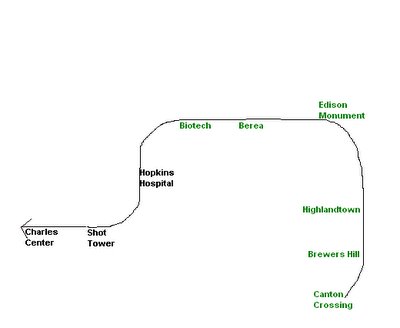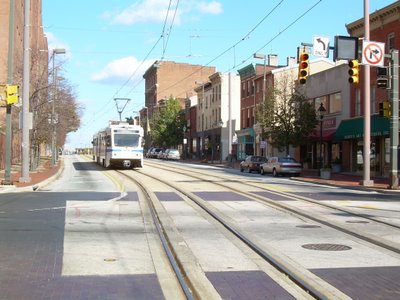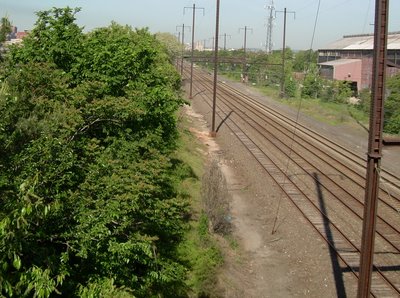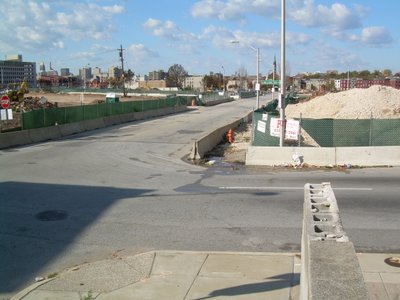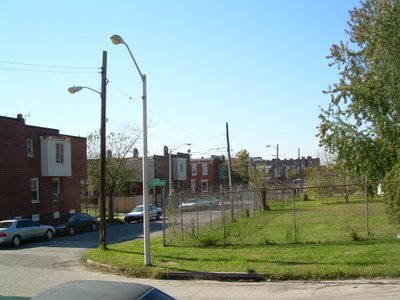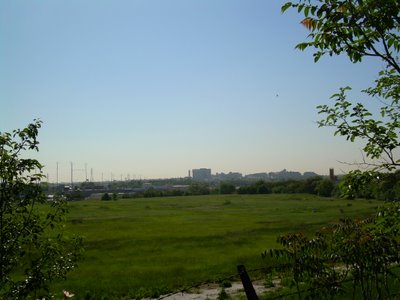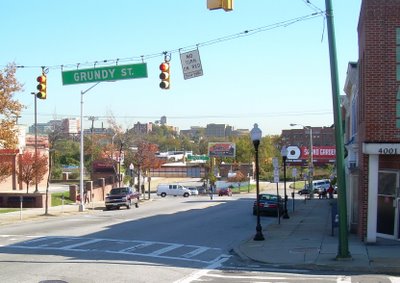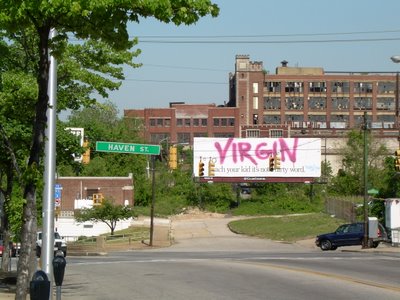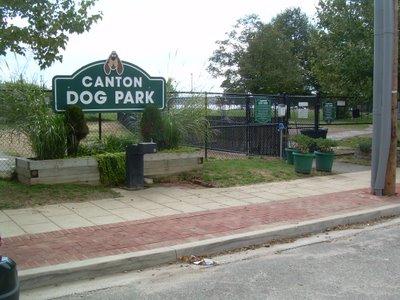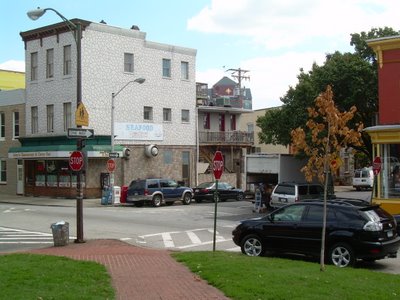TRAFFIC LAWS VERSUS THE LAWS OF THE STREET
The deterioration of Gay Street between North Avenue and Preston Street is a sad urban tale that has been told many times, not just there but in Baltimore as a whole and indeed throughout America, with many lessons learned and not learned. But the story has seldom been told through traffic regulations. Even so, the lessons may be familiar.
No one could argue with the fact that the City has large swaths of real estate that are simply urban failures. While it is the boarded up housing and vacant lots that are the most apparent manifestations, illogical traffic and parking regulations are also part of the scene.
Gay Street between North Avenue and Preston Street is one of the clearest examples of such failure. And while the boarded up housing and vacant lots may be the result of some complex pathological urban process, the traffic regulations are simply the result of blatant neglect and incompetence.

This is Gay Street looking southward from North Avenue. There are three lanes, curb to curb, next to the very narrow sidewalks which are next to mostly blighted housing and vacant lots. Parking is never allowed on the northbound curb, where the bus is in the picture above. Parking is allowed except between 7 to 9 AM and 4 to 6 PM on the southbound curb. The center lane is designated for reversible traffic flow. The southbound sign says, "Curb Lane Only 4 PM to 6 PM", which means that the southbound traffic must use only the curb lane between 4 and 6PM, because the center lane is given over to the northbound traffic (leaving downtown) during the evening peak period.
The most obvious problem created by the parking regulations is having fast-moving through traffic and buses mere feet away from the houses, 24 hours a day. How could a residential community possibly endure under such conditions? The answer is that it cannot and has not.
But there is an even larger traffic problem. Until 4 PM each day, parking is legal along the southbound curb. Then at exactly 4 PM, parking on the southbound curb becomes illegal and at exactly that same moment, the southbound curb lane becomes the only lane available for southbound traffic. At 3:59 and 59 seconds, the center lane is designated for southbound traffic and exactly one second later, that lane becomes designated for northbound traffic.
Furthermore, there are no electronic signals to choreograph this split-second transition from southbound to northbound traffic in the center lane, or from parking to no parking along the southbound curb. There is nothing to synchronize the watches of the motorists making this transition, or to inform the motorists who have no watches or are not looking at their watches.
In other places with reversible lanes (the Bay Bridge for example), there is a time period when the reversible lanes are not used in either direction. The reversible lanes are swept clean of traffic so that a transition can be achieved for use by traffic in the opposite direction. This is not done on Gay Street because at the split second before the transition occurs, it is totally legal for a car to be parked in what becomes the only southbound traffic lane one second later. There is no time to ticket or to tow these cars, which in the Baltimore City government are two separate time-consuming processes.
But what the signs say is not what actually occurs on Gay Street. What actually occurs daily in the center lane of Gay Street is a good analogy for life in general in this forlorn neighborhood.
First of all, the public laws are rendered meaningless. It is a common occurrence to see traffic traveling in both directions in the center lane simultaneously. One driver or the other has the legal right to be there based on who is adhering most accurately to the clock. Of course, what it really amounts to is a case of the drivers staring each other down and one of them baling out. It may be the one who is in the right, or it may be the one who is in the wrong, or it may be the one who is least strong-willed (i.e. has the least balls) or it may be the one who is more able to pull to the right and manage to avoid the traffic or parkers in that lane.
Secondly, the true law that governs local behavior is the law of the street. Sane drivers avoid the center lane. Of course, if the curb lane is blocked, legally or otherwise, one cannot avoid the center lane. So the most sane drivers avoid Gay Street altogether, which is the chief reason why Gay carries less traffic here than north of North Avenue where it is called Belair Road. Slightly less sane people will drive on Gay Street but try to avoid the center lane. Still farther down on the sanity scale will be the drivers who seek out the center lane and "dare" opposing drivers to do likewise. Still further down the sanity scale will be those who dare to park their cars on Gay Street near the 4 PM bewitching hour. Finally, there are the most crazed and desperate - those who live on Gay Street. There are not very many of those people anymore.
It is not difficult to image how the "law of the street" regarding traffic regulations might fit into the local etiquette regarding other endeavors of neighborhood commerce and social life. It takes a lot of nerve to survive on Gay Street.
But what is truly astonishing is that the posted traffic regulations on Gay Street are the exact same as they have been for decades. Once upon a time, Gay Street was a nice neighborhood. It was certainly a much nicer neighborhood when the current traffic and parking regulations were put into effect (the 1960s? the 1970s?) than they are now.
This illustrates the slow quiet cancerous effect of bad traffic and parking regulations and urban problems in general. Not many people are going to just get up and leave town when the City puts some up some traffic sign in front of their house that they don't like. You may not even have a car so you may not even give it much thought. Many City people didn't own cars back then and many still don't. The City's attitude has always been to deal with parking problems where there are a lot of parkers. After all, the squeaky wheel gets the oil.
The biggest event on Gay Street in recent history was the riot of 1968. That was south of this area, and that portion of Gay Street was then closed completely and turned into a pedestrian mall. That has generally been regarded as a failure too, but it is interesting that it was exactly the opposite kind of failure that Gay Street has experienced between North Avenue and Preston Street. It was a failure of no traffic, as opposed to a failure of traffic. At least it was not a failure of neglect.
The larger lesson is this: An urban neighborhood must be nurtured as a neighborhood, not as traffic moving on a street to be manipulated by signs and regulations that are far less powerful than the innate laws of urban survival, growth, life or death.


